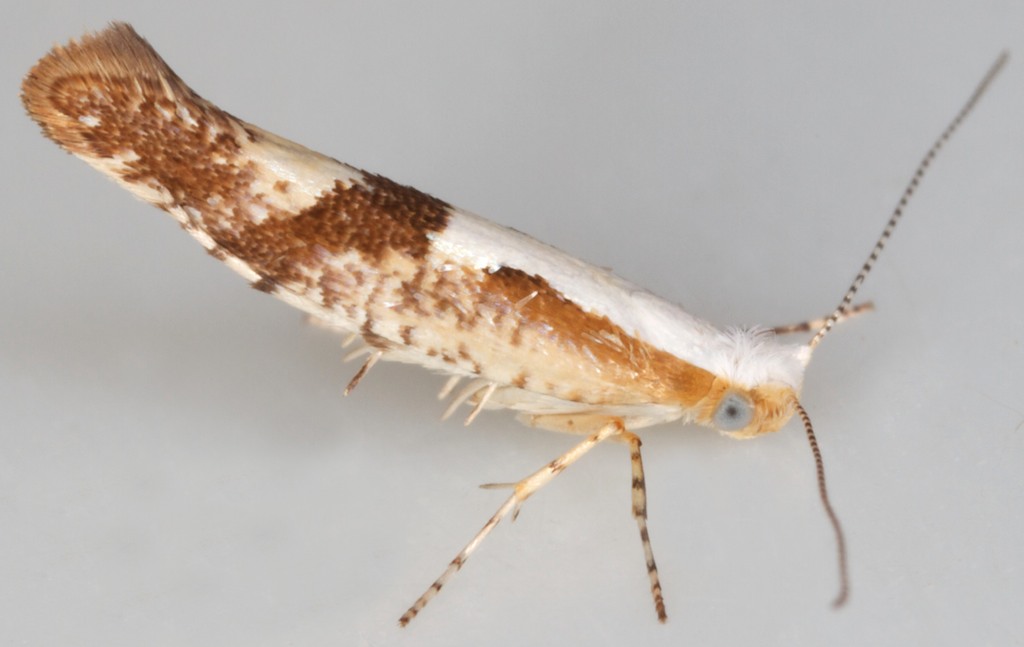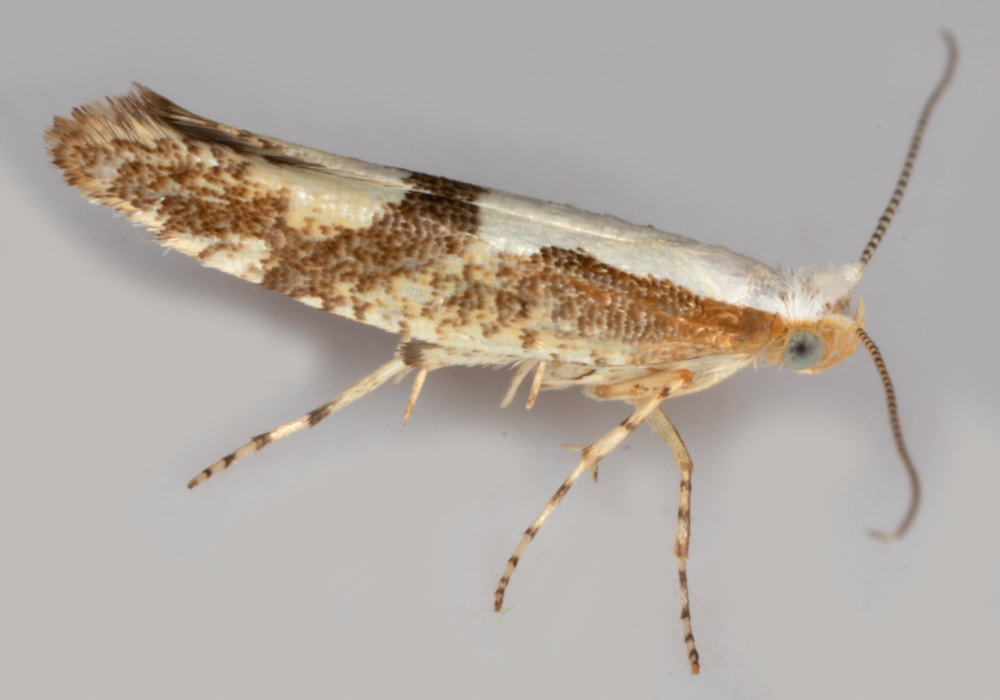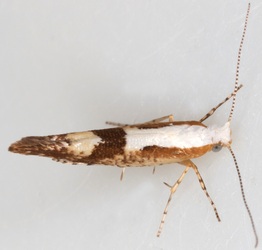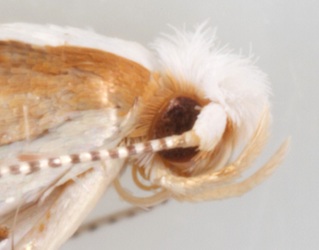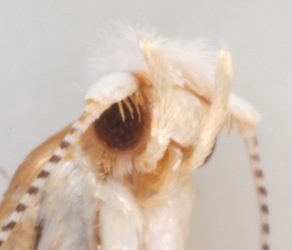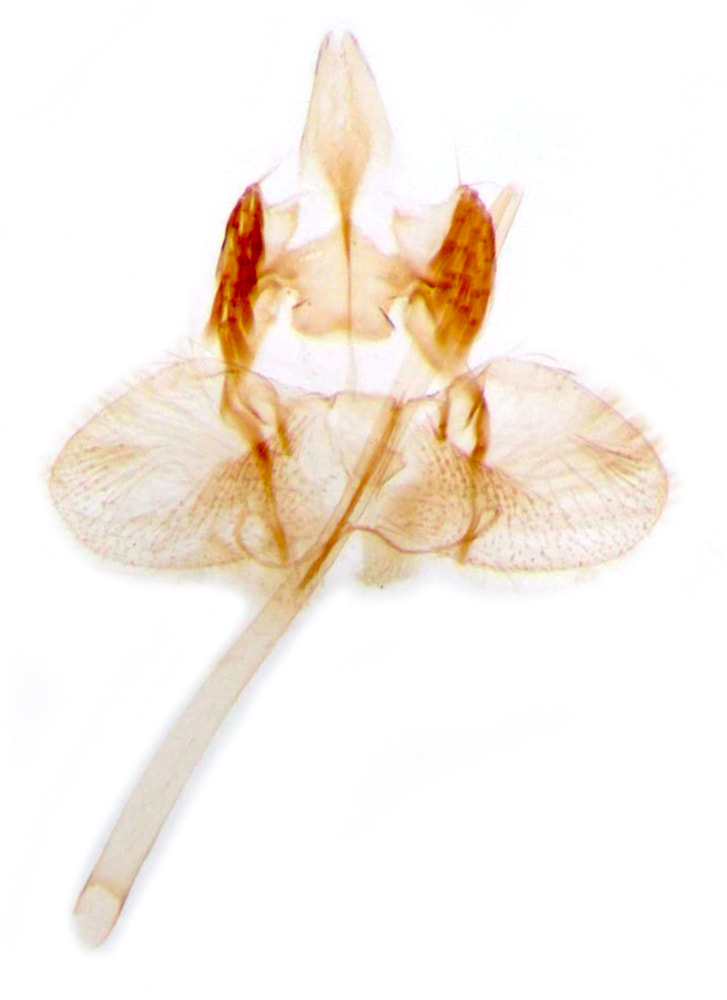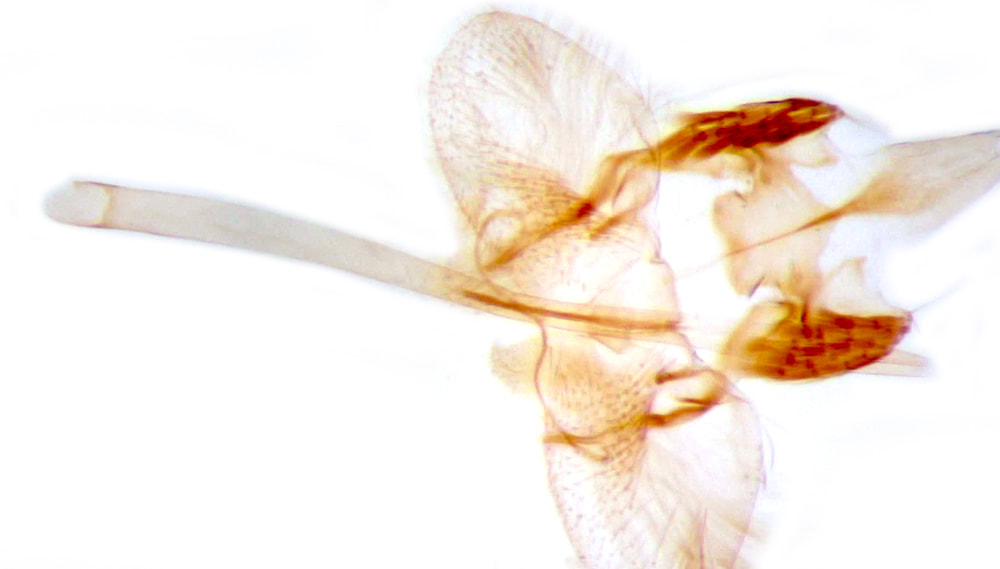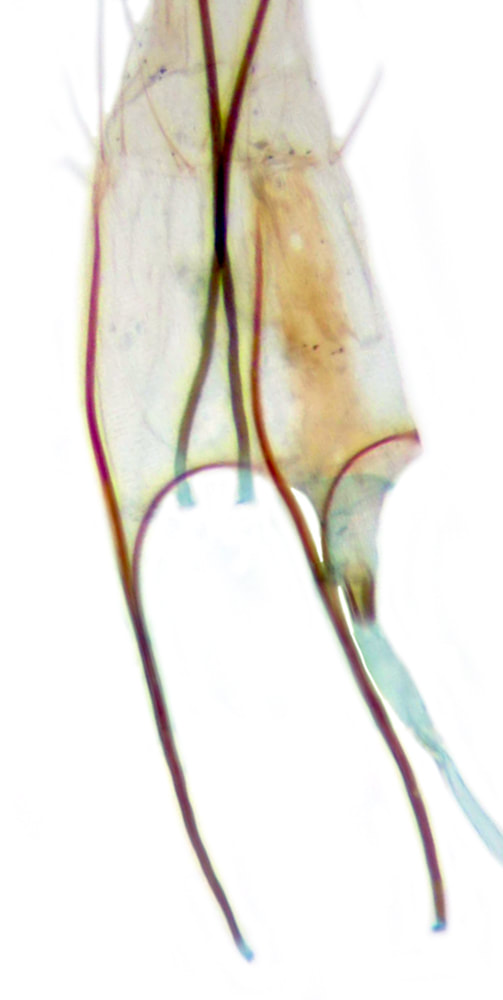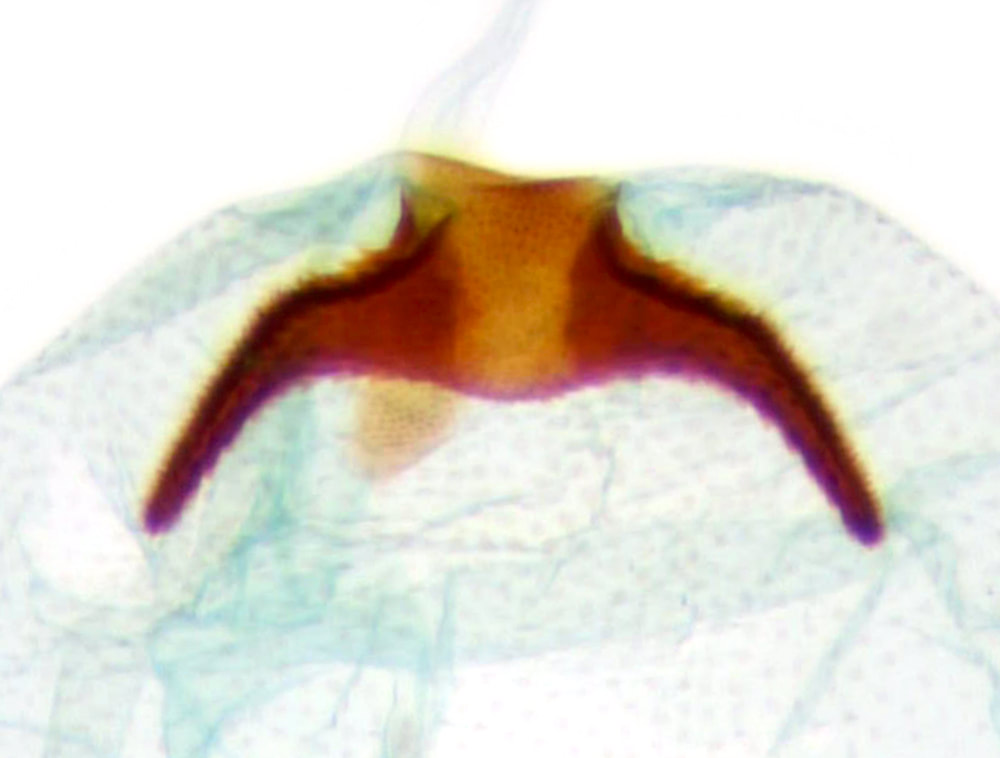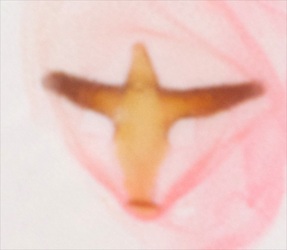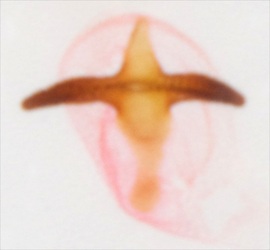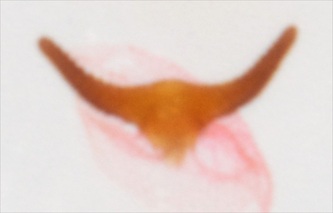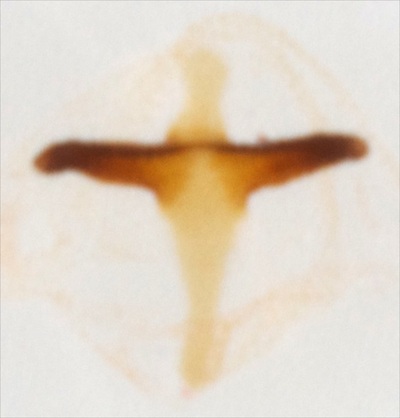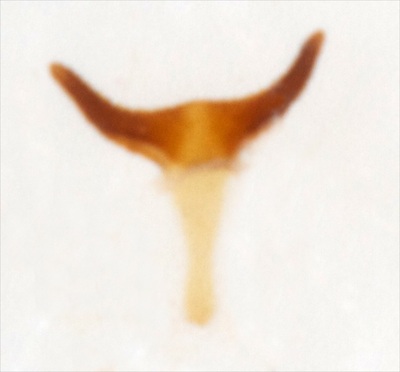20.021 Argyresthia (Argyresthia) pruniella (Cherry Fruit Moth)
ws: 10-12mm; Jul; cherry (Prunus cerasus); common throughout GB
ID: There are 7 species of Argyresthia with a similar pattern of a white dorsal streak interrupted by a brown or fuscous spot or fascia at around 1/2 and with basal markings not confined to the costa (excludes A.ivella), without an additional white basal streak in fold (excludes A.abdominalis) and with the forewing not largely uniform in colour apart from the dorsal streak (excludes A.semifusca/albistria/semitestacella).
In 3 of the species, A.conjugella/bonnetella/pruniella the white dorsal streak is interrupted by a fascia (rather than a dark spot that does not continue across the wing as a fascia). A.conjugella (ws10-14mm) has dark fuscous markings tinged purple
According to MBGBI3 A.pruniella has the "median fascia pronounced, bent outwards to meet or nearly meet the costa before 3/4" while A.bonnetella has the "median fascia slender and curved towards termen, nearing costa towards apex"; in short the median fascia of A.pruniella is "broader and less oblique" than that of A.bonnetella.
Female genitalia: the signa of both species are shown at dissection group; however A.pruniella is shown only in the standard "flat' view and A.bonnetella is shown only in the "skyline" view - making the images impossible to compare. However, the signum of specimen §1 does show some differences from that of the specimen I have identified as A.bonnetella. which averages smaller (ws9-11mm).
In 3 of the species, A.conjugella/bonnetella/pruniella the white dorsal streak is interrupted by a fascia (rather than a dark spot that does not continue across the wing as a fascia). A.conjugella (ws10-14mm) has dark fuscous markings tinged purple
According to MBGBI3 A.pruniella has the "median fascia pronounced, bent outwards to meet or nearly meet the costa before 3/4" while A.bonnetella has the "median fascia slender and curved towards termen, nearing costa towards apex"; in short the median fascia of A.pruniella is "broader and less oblique" than that of A.bonnetella.
Female genitalia: the signa of both species are shown at dissection group; however A.pruniella is shown only in the standard "flat' view and A.bonnetella is shown only in the "skyline" view - making the images impossible to compare. However, the signum of specimen §1 does show some differences from that of the specimen I have identified as A.bonnetella. which averages smaller (ws9-11mm).
§1 Ardnamurchan, Highland; 09/07/2012; female; fw 5.6mm
§2 Strumpshaw Fen, Norfolk; 25/07/2014; female
§3 Westcliff-on-sea, Essex; 29/06/2019; female; fw 5.0mm; to light
§4 Pound Wood, Essex; 13/07/2020; male; fw 5.0mm
All images © Chris Lewis
§2 Strumpshaw Fen, Norfolk; 25/07/2014; female
§3 Westcliff-on-sea, Essex; 29/06/2019; female; fw 5.0mm; to light
§4 Pound Wood, Essex; 13/07/2020; male; fw 5.0mm
All images © Chris Lewis
Page published 25/11/2012 (§1) | §2 added 05/08/2014 | §3 added 20/02/2020 | §4 added 30/01/2021
